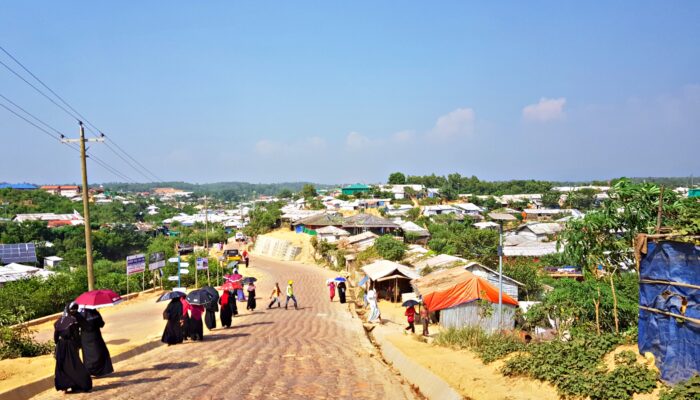Coronavirus Reaches the World’s Most Persecuted People: The Threat of COVID-19 in the Rohingya Refugee Camps
On May 14 2020 the first case of the novel coronavirus was confirmed in the biggest refugee camp in the world—Kutupalong, Cox’s Bazar. The refugees in the camps are at a greater risk of getting infected by the disease than other people. Within these camps, refugees live in cramped spaces, do not have viable access to healthcare, and are unable to receive clean water or sanitization. Domestic and international organizations are facing severe challenges while trying to tackle the spread of the disease within these congested camps. With 40,000 people living per square kilometer in the camps, insufficient space to isolate the infected and a lack of opportunities to ensure further preventive measures are taken, the presence of COVID-19 in the camps has created an emergency. Furthermore, the host communities in Cox’s Bazar amount to around 440,000 people who are exposed to COVID-19 alongside the refugees. International workers also provide service in these camps and there is quite a large number of them. As of June 2020, among 538 Rohingyas who have been tested for the virus, 50 have tested positive and 5 have died. It is also observed that Rohingyas within the camps are very reluctant to come forward for testing due to fears of the disease as well as social stigma. People within the camps as well as host communities, however, do seek healthcare when showing symptoms of COVID-19, but nonetheless remained engaged in risky behaviors such as praying in congregations and continuing communal lifestyles. Decluttering the settlements within the camps is close to impossible because of the volume of people residing there. Even in the host communities in the area, communal lifestyles mean that closely bonded family life is maintained at the expense of social distancing. Overall, this poses a doubled threat for not only the refugees but the host communities as well.
There can be, hence, dire risk scenarios observed in the refugee crisis during the pandemic. Firstly, with some 900,000 refugees in the camps, there is an enormously high chance of mass transmission with greater average mortality and morbidity rates compared to other areas in Bangladesh. There remain prohibitions regarding the movement of the refugees which prevents them from going anywhere beyond the camps, and since the camps are already overcrowded and congested, it is nearly impossible for isolation programs to succeed. Secondly, refugees depend on shared and overcrowded facilities and hence, personal hygiene maintenance is difficult. One of the most effective and essential steps in the prevention of COVID-19 is hygiene, which the refugees don’t have sufficient access to. Thirdly, since the refugees are receiving humanitarian aid as they live below the poverty line, an estimated 45% of these Rohingyas lack sufficient nutrition. Children in the camps, in this regard, become especially vulnerable during the pandemic due to malnourishment. Furthermore, there are not enough means of communication available in the camps which can successfully disseminate accurate information and awareness regarding the Coronavirus. This allows the rumors and misinformation to circulate.
There seems to be preparedness by humanitarian agencies and the Bangladesh government to some extent but it is nowhere near enough. At present, international organizations such as the United Nations, United Nations High Commissioner for Refugees and International Organization for Migration are working on preparing local hospitals with the bare minimum of resources that could assist in tackling potential outbreaks of the virus. However, only a five-bed isolation ward in the Cox’s Bazar district hospital and two fifty-bed isolation wards in the sub districts of Ramu and Chakaria Upazila have been set-up for the refugees and host community civilians.
Rohingya refugees do not have access to any of the 29 labs across Bangladesh to keep track of the coronavirus because of their stateless status and restrictions on movement. Healthcare workers within the camps do not have enough access to effective communication, not to mention the refugees’ limited access.Therefore, the current preparedness amounts to almost nothing in view of the risks.
With the coronavirus pandemic still raging on, it is high time collaborative measures are pursued by humanitarian organizations and the Government of Bangladesh to enhance their work to prevent a catastrophe that could fall upon both the refugees and the local communities. Steps should be taken by the local authorities to ensure that isolation areas can be made to host refugees who show symptoms.
